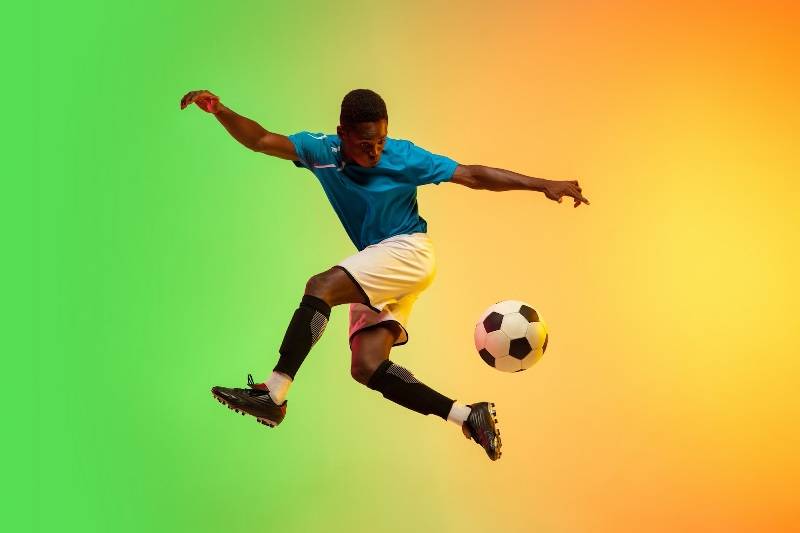Soccer is a popular sport worldwide, with an estimated 265 million active players. While it’s an excellent way to stay fit and have fun, soccer comes with a risk of injuries, particularly those related to the ankle and foot. Podiatrists specialize in treating foot and ankle injuries, and they are a valuable resource for soccer players.
One of the most common soccer-related injuries is an ankle sprain, which occurs when the ligaments connecting the bones of the ankle are stretched or torn. Ankle sprains can be caused by a variety of factors such as tripping, slipping, or being tackled by another player. The severity of the sprain can vary from mild to severe, depending on the extent of the damage to the ligaments. Mild sprains may only require rest and over-the-counter pain relievers, while severe sprains may require immobilization with a brace or cast, and physical therapy to regain strength, range of motion, and balance.
In addition to ankle sprains, soccer players are also at risk of developing Achilles tendinitis. It’s an inflammation of the Achilles tendon, the largest tendon in the body, which connects the calf muscles to the heel bone. Achilles tendinitis is usually caused by overuse or repetitive stress, which can lead to micro-tears in the tendon. Soccer players are at risk of developing Achilles tendinitis from running, jumping, and sudden stops and starts. Symptoms of Achilles tendinitis include pain and stiffness in the back of the heel and calf. A local podiatrist can diagnose Achilles tendinitis and recommend rest, ice, compression, and elevation, as well as physical therapy and custom orthotics to support the arch and relieve pressure on the Achilles tendon. In severe cases, corticosteroid injections or surgery may be necessary.
Plantar fasciitis is another common injury in soccer players, which is inflammation of the thick band of tissue that runs along the bottom of the foot, from the heel to the toes. This condition often occurs from overuse, causing tiny tears in the plantar fascia, resulting in pain and stiffness in the foot’s arch. Plantar fasciitis can cause significant pain and can make it difficult to stand or walk, which can have a significant impact on a soccer player’s performance. A podiatrist can diagnose plantar fasciitis and recommend a course of treatment that can include rest, ice, compression, and elevation, custom orthotics or insoles to support the arch, and physical therapy. In some cases, corticosteroid injections or surgery may be necessary.
Stress fractures are another type of foot and ankle injury that soccer players may experience. They are small cracks in the bone caused by overuse, repetitive stress, or sudden impacts. Stress fractures usually occur in the lower leg or foot, and they can cause significant pain, swelling, and tenderness. A podiatrist can diagnose stress fractures with an X-ray or MRI and recommend treatment that may include immobilization with a cast or walking boot, rest, and physical therapy.
To prevent foot and ankle injuries while playing soccer, it’s essential to wear the right gear. Proper footwear is crucial for supporting the foot and ankle during the intense activity of a soccer game. Shoes should be well-fitted, with good support, and adequate padding. Insoles and arch supports can also be added for additional support and cushioning.
Stretching before and after games is also essential to prevent injuries. Players should take the time to warm up their muscles before playing and stretch their lower leg muscles, calves, and ankles. This will help to improve flexibility and reduce the risk of strains and sprains.
Finally, players should take care of their feet and ankles by keeping them clean, dry, and healthy. Any foot or ankle pain or discomfort should be addressed promptly by a podiatrist to avoid further complications.
In conclusion, soccer is an excellent way to stay active and have fun, but foot and ankle injuries can happen. Podiatrists are foot and ankle specialists who can diagnose and treat a wide range of injuries, allowing soccer players to return to the field safely and quickly. By taking the right precautions, such as wearing the proper gear, stretching before and after games, and seeking prompt medical attention when necessary, soccer players can enjoy the sport they love without experiencing painful foot and ankle injuries.
Also, Read About
All About Monkeypox: Origin, Symptoms, Prevention, Vaccines, Treatment
Are All Hair Transplants A Success?
Are you thinking of getting fat-dissolving injections? Read this before going ahead.
Baby Care: 8 Ways to Keep Your Baby Safe and Healthy

